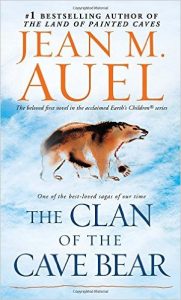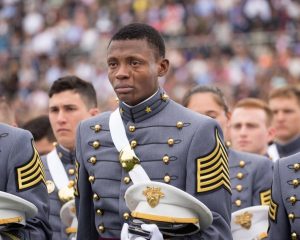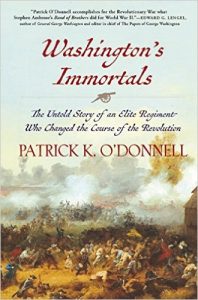
As the year winds down, I am trying to catch up on the conference reports from the time when I switched to an electronic newsletter and new website. During that period I fell behind and haven’t caught up. So here goes.
On October 14, I attended a conference in Albany between the New York State Association of Counties (NYSAC) and the New York State Historian. Devin Lander initiated the contact as part of his reaching out after he became the state historian in May. In the current APHNYS newsletter, Devin wrote:
A Message from the New York State Historian
As an action item, and in partnership with APHNYS, the Association of Counties (NYSAC), and the Association of County Clerks, I was able to coordinate and host a day-long training meeting for county historians and county clerks in Albany on October 14. It is my hope that this meeting was a pilot program for further annual training opportunities for Local Government Historians that can be expanded for 2017 and beyond.
During his earlier career as a legislative aide, he had the opportunity to interact with numerous state organizations. In his new job, he contacted NYSAC about working together. The result was this conference which by all accounts people the participants want to be an annual event moving forward.
NYSAC represents the 62 counties of the state. According to its website
As the voice of county officials throughout New York State, NYSAC is steadfast in communicating the needs and recommendations of our members to State and Federal lawmakers. Local government is at the heart of New York State, and we are proud to represent New York’s counties and their elected and appointed officials.
NYSAC represents New York counties and their taxpayers before Federal, State and local officials on matters germane to county governments.
NYSAC informs our membership and the public at large on issues of importance to county governments.
We educate, train, and provide research on public policy to Federal, State and Local officials and to members on issues important to counties.
We advocate for our 62 counties, including the City of New York, to the legislative and executive branches of government at the State and Federal levels.
I am particularly interested in two items NYSAC mentioned: the education and training it provides for its 62 members and its advocacy role in Albany on their behalf. It will conduct a three-day legislative conference in Albany from January 30 to February 1 and I presume this event is annual. In other words, at the beginning of the legislative session, NYSAC makes its presence known to the powers that be.
The organization has a staff of 13 people. By contrast APHNYS has none as a volunteer organization although we might consider Devin to be one. However, he is a government employee so it is not quite the same. MANY has a staff of two by way of comparison. The Executive Director and host for the conference in Albany is Stephen J. Acquario. I occasionally send him and his staff some of the New York History posts I write when I think it appropriate to his organization. He was kind enough to inform me of a name to add to my distribution list when there was a staff change at NYSAC. Would that the history organizations were so considerate.
Theoretically the conference audience could have consisted of 62 county clerks, 62 county historians plus administrative staff and public guests such as myself. In fact, attendance was fairly evenly split between the two groups based on a show of hands. I identified 14 county historians in the audience and there probably were a few more. They tended to be from the Hudson and Mohawk Valleys as one might expect with distant visitors all the way from Wyoming and Staten Island.
Although in principle there should be 62 county historians, everyone knows the state law is routinely violated with no penalty. Travel budgets for education or professional development similarly are minimal or non-existent. Even when there is paid-government county historian, that position is not necessarily secure. Consider the example of attendee Putnam County Historian Sarah Johnson, in a part-time government position she would like to make full-time. I received an email from a Putnam County legislator sent to a county history list serve. The message is reproduced below:
To all Fellow Historians;
Please call the Putnam County Legislature Office 845-808-1020 or e-mail putcoleg@putnamcountyny.gov name your legislator & show support to make the Putnam County Historian a full time position. Sarah Johnson is a very competent educated person & is doing a great job. The financial impact of this is minimal & there are about 5 misinformed residents who have the ear of the Legislature in stopping this. Some want to completely eliminate the position. Sarah will be able to help us with grants, tourism and of course archival preservation. Putnam County goes back to the beginning of our Republic. If we forget our past we will not know our future.
It is unlikely that any of NYSAC’s members have a similarly precarious position. Of course, it is unlikely that any county doesn’t have a county clerk at all. The position is mandated by state law and all counties apparently adhere to its stipulations.
Bill Cherry, the NYSAC President and Schoharie County Clerk gave the welcome. The Schoharie County Historian was in the audience. By contrast he has a day job to pay the bills; it happens to be in the history area unlike say the day jobs of county historians in Rockland and Sullivan but at least there is a position unlike Otsego and Westchester among others.
Gerry Smith, APHNYS President delivered the first presentation in one of his last acts before stepping down. He distributed a handout entitled “But What Am I Supposed to Do?” One of my favorite sessions at the annual APHNYS conference is the new historian session which I have written about before. As Gerry noted in his presentation, there is no training. The situation is very different than with county and municipal clerks. In the Q&A, the suggestion was made that the county clerk training provided by NYSAC should include a session on the importance and role of the county historian.
I would like to take this opportunity at the end of the year to reiterate my New Year’s resolution of year ago for this year: a one-week training program in Albany to be required for all county historians to include a day with:
New York State Archives
New York State Library
New York State Museum
New York State Office of Parks, Recreation, and Historic Preservation
New York State Education (on local and state history in the k-12 curriculum).
The training would conclude with a reception at the Executive Mansion with the Governor. Such a training program would include familiarizing historians with the REDC process and cultural heritage tourism. It would alert the county executives that the county historian position is one which should be taken seriously.
To emphasize the former importance of the historian position, a copy was distributed of an annual report submitted in 1927 to the state historian from a small town historian who went on to be elected president of the United States four times. But he never became a county historian!The Q&A and breakout sessions proved most informative since they provided people the opportunity to interact, learn from others, and commiserate. Some key items worth following up on from these discussions include:
Unfunded mandates by the state
Training
Public programs
Developing a media presence
Getting local historians who have day jobs or who don’t drive at night to be more involved in county, regional, and state meetings.
As it turns out the NYSAC legislative advocacy agenda for its upcoming meeting includes:
Local Government Finance and Tax Relief
■ Urge voters to approve a constitutional convention so that delegates can consider ending the imposition of unfunded state mandates on counties and other local governments.
By law, New York State votes every 20 years whether or not to hold a state constitutional convention. In 1997, the voters voted “no.” The pace is likely to pick up on the 2017 vote once the new year begins and much preliminary work has done already for “ConCon” spearheaded by The Nelson A. Rockefeller Institute of Government in Albany.
I would be remiss if I did not mention that the lunch speaker was Bruce Dearstyne. He writes repeatedly on behalf of New York State history and on how much we have to celebrate. Perhaps NYSAC can help the history community deliver this message to the Governor and the Legislature in a meaningful way.
All in the all, this hopefully inaugural conference was a good start to what should be an ongoing relationship between the county clerks and the county historians.













































